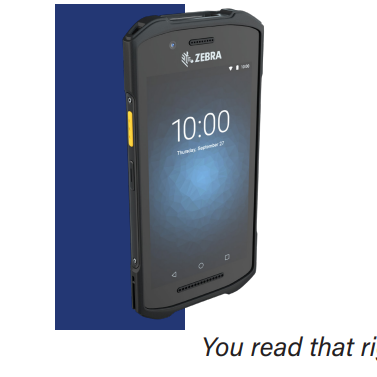
News
RSS-
 Zebra's POS system is a powerful solution that combines innovative mobile computer technology with robust features. Discover how this system can transform your business operations and enhance customer experience.Read now
Zebra's POS system is a powerful solution that combines innovative mobile computer technology with robust features. Discover how this system can transform your business operations and enhance customer experience.Read now -

Optimize your POS system now
Read nowOptimize your POS systems now with modernization using tablets for a faster, newer, and stronger point of sale experience. Unlock the potential of your business with these tips and strategies.
Visit our page for more information about upgrading your devices.
-

4 Challenges Field Teams Expect Nowadays, and 4 Solutions Addressing Them
Read nowBetween new consumer expectations for faster service and several labor shortages across the nation, field teams face pressures from virtually every angle. In 2022, the US trucking sector lacked an estimated 78,000 drivers; however, studies show that 68% of consumers...
-

6 Reasons You Should Consolidate Systems in the Patrol Car
Read nowWhile most states have laws against distracting driving, it is generally agreed that public safety officials should have access to timely data and communication channels. Consequently, today’s patrol cars may serve as a high-tech mobile office, empowering officers to quickly...
-

Last Mile Delivery Solutions that Meet Today’s Challenges
Read nowToday, as ecommerce booms, consumer expectations for rapid, accurate delivery are soaring. Despite all the technology and work that allows businesses to pick and pack orders efficiently and rapidly move shipments through distribution, it’s often the performance over the “last...
-

How RFID Drives Better Inventory Practices in the Legal Cannabis Industry
Read nowThe legalization of cannabis products in various states across the US has raised important compliance-related issues for growers and retailers who are tasked with tracking and reporting the movement of their highly regulated products. The challenge for suppliers and sellers...
-

How to Convince Customers That Enterprise Devices are Better for Field Service Applications
Read nowISVs who work with small- and medium-sized field service businesses frequently run into customers whose field technicians are using consumer-grade mobile devices. Or, if they’re haven’t already authorized the use of consumer smartphones or tablets, they may be considering it...






